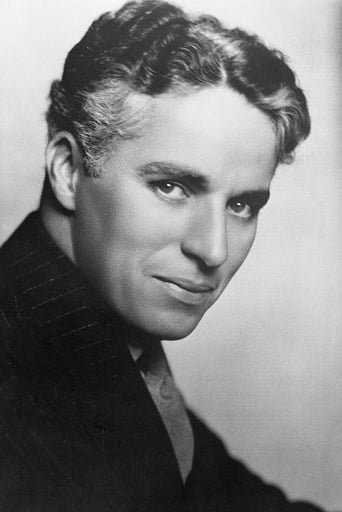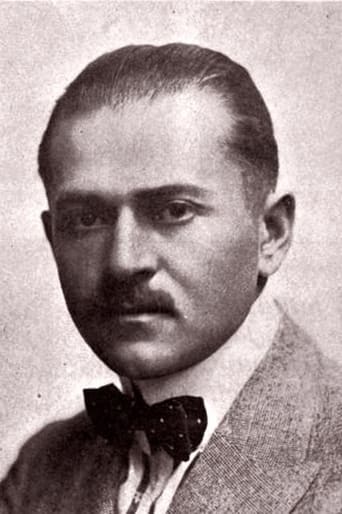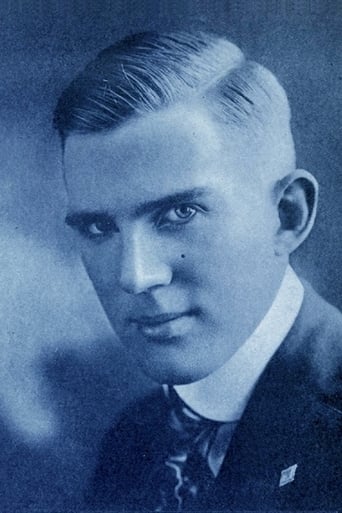Solemplex
To me, this movie is perfection.
SpuffyWeb
Sadly Over-hyped
Casey Duggan
It’s sentimental, ridiculously long and only occasionally funny
ofpsmith
Kid Auto Races at Venice is disputably Charlie Chaplin's first film where he plays the tramp. And there sure was a lot of perfecting to be done. The film just consists of Chaplin walking around the filming of a car race at Venice, and getting in the way. Now this is all right for 1 or 2 jokes, but when you make it the entire movie, it gets old pretty fast. Because that's all there is to it. If I'm honest, the only reason to watch it is to see the tramp's origin. I suppose if you want to say you've see them all, that would be a warrant. So all in all, it's not one of Chaplin's best by any means. I can't really recommend it, unless you're curious.
Film_Nitrate
It's strangely appropriate that this should be the first intertitle of the first film to be released that featured Charlie Chaplins' immortal character: The Tramp. From his very first appearance, primitive though it is, he is undeniably engaging, though there is nothing in Kid Auto Races at Venice, Cal. to suggest the character was endearing enough to be a long-term fixture, let along the icon he became. Considering Chaplin himself would go on to appear in a staggering 35 films over the next 12 months for Keystone, it seems it was just as impossible to keep him away from the camera. But this is the place it all started for The Little Tramp.A century has now passed since the Keystone comedies producer Mack Sennett decided to make a short film with director Henry Lehrman and new actor Charles Chaplin at the Kid Auto Races on Saturday January 10, 1914, and to watch the 6-minute film today is to look back onto a world completely alien to anyone alive today. Even the title is cumbersome and obscure. The Kid Auto Race, in this case the Junior Vanderbilt Cup Race, was a short-lived event where the streets were closed off in Venice and young teenage boys were encouraged to race each other in their own home-made carts, usually powered by motorcycle engines. The race was officially administered, and for the winner there was a considerable prize of $250 on offer. To see boys racing what are effectively motorcars around the roads, with no safety equipment whatsoever, only adds to the modern disconnection with the film. It's to this usual backdrop that Chaplin debuted his creation to a large audience for the first time.The most fascinating aspect of Kid Auto Races is the reaction of the audience to Chaplins' presence. Film cameras were still uncommon at the time, so there would have been a degree of excitement about appearing in a film (one woman apparently had no intention of being immortalised on nitrate, and visibly hides behind a programme for the duration of a scene with Chaplin right in front of her), but more than that we see their amusement and interest in the strange looking fellow jumping around in front of the camera. Mack Sennett had found the Tramp character hilarious when Chaplin first experimented with it on the Keystone lot, but looking around the many faces in the crowd, they are all smiling or laughing, even if they are slightly bemused. If this was an indication of how audiences might react when the character was shown in theatres across the country, then it was a positive one.The film is all improvised, with Chaplin and the "director" the only apparent actors. There's also the virtually unprecedented scenes in which the camera is filming another cameraman hand-cranking the camera on screen which Chaplin is larking around in front of – in one of the first examples of this happening. Despite this on-screen camera, Chaplin regularly breaks the fourth wall, and it's inconsistent throughout which camera is being addressed.As entertainment, even the most enthusiastic film historian would have a tough job making a case for Kid Auto Races aging well. The film is almost like an artists' original sketch for what would eventually become a magnificent painting. There are many better Chaplin shorts, and many better shorts featuring The Tramp. But as a historical document, showing the origins of this great character, this is absolutely invaluable and it's easy to imagine in another 100 years people watching this to see exactly how Charlie Chaplin debuted The Little Tramp.
John T. Ryan
THE NAME OF the venue being 'Venice', needless to say it is set in Venice, California and not in Italy. If it had been in the European city of that name, the races would, of necessity, be contests of speed between competing gondolas.AS WE ALL KNOW, a story, any story be it Mother Goose, Mickey Spillane or a Movie, has a beginning, a middle and an end. KID AUTO RACES dares to differ with that axiom, flying right in its face. Of course, the argument can be made that there is no real story here, at least not a written one. Improvisation ruled the day.THAT INDEED MAY well be true. There is, after all, an exception to any rule. The only exception here being to the rule that states that; "There is an exception to an rule!" THIS ODDITY OF a one reeler, shot on split reel,* with some egg-head scientific subject matter is truly as unique as any movie. Whatever story there was is credited to Director, Henry "Pathe" Lehrman; who incidentally played the part of the Director, on screen. This being a pure case of "typecasting", plain and simple.OTHER THAN THE appearance of Chaplin and Lehrman's names in the cast, no other actors are credited. There is perhaps a proverbial "Cast of Thousands" filmed; but then, they were spectators of the actual event that was taking place there. Jus think, if Mr. Sennett had to pay all of those spectators as Extra$, ju$t what it would have done to Keystone's Finance$? HOWEVER, THE LITTLE film does succeed in at least a couple of areas.FIRST OF ALL, Chaplin's mugging throughout for approximately eight minutes or so carried the whole thing. Amazingly, his constantly jumping in front of the camera and mugging tirelessly never seemed to bore us The Little Tramp's tenacity and variation of silly facial expression revealed that: A. The public has not changed. Just watch any new report and observe the clowns who act the fool; knowing that the world is watching.B. Charlie really knew his public.SECONDLY AND MOST importantly, with the production and release of KID AUTO RACES AT VENICE, Chaplin, Sennett and Lehrman collaborated to give the world The Little Tramp! FOR THIS WE say, way to go, Guys! NOTE:* We had read that the rest of the reel was occupied with something like "Arachnids of the World" or some such other rot.
CitizenCaine
As many reviewers noted, Chaplin's second film is historically important in so far as it is the first screen appearance of him dressed as the tramp. However, the film remains just that, a historical landmark. As a comedy, it is experimental in that it has a factual setting rather than a fictional one in a studio. The film has something to do with the tramp trying to get a picture of himself to send to his girlfriend, as the bookends of the film make clear. However, the film consists of nothing more than the tramp deliberately blocking the camera crew trying to film the kids' auto races at Venice. The director of the crew (and of the film) shoves the tramp back several times, so he can continue filming. The most amusing thing is that the tramp has his back to the autos turning the corner where filming occurs, so one wonders whether Chaplin received direction to get out of the way ahead of time or whether it was all ad-libbed like much of the other films of the period. As a Keystone comedy, it lacks panache. * of 4 stars.


